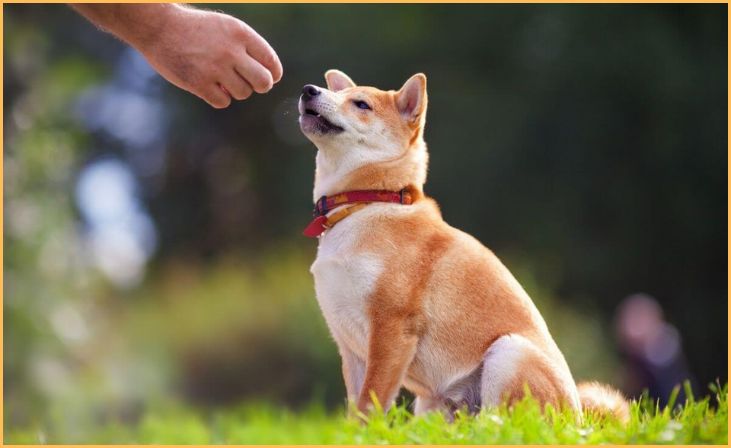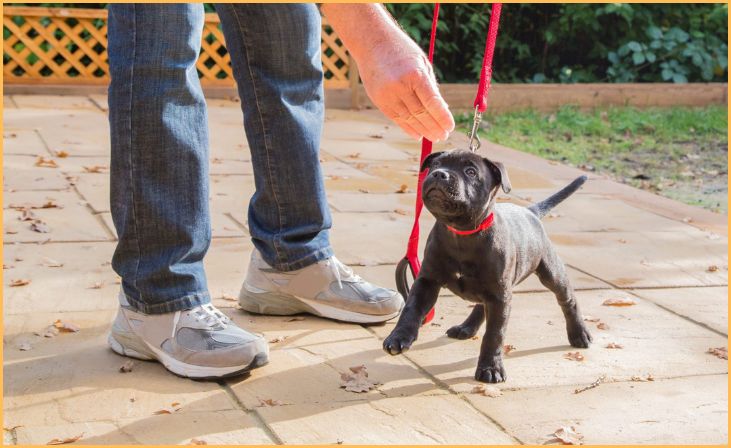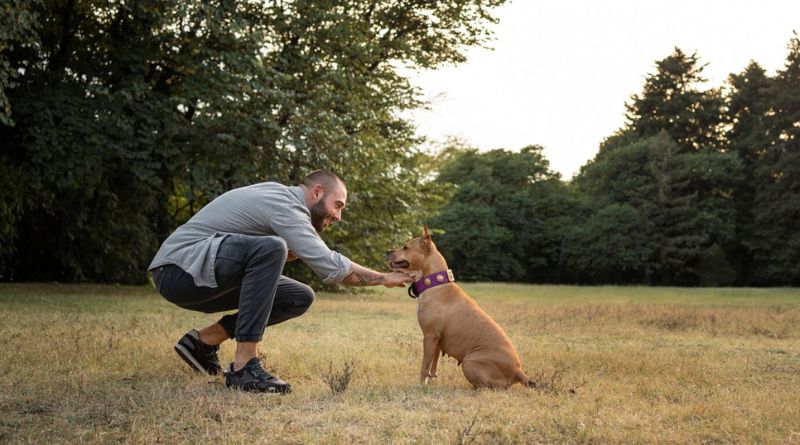Dog Training Tips – Embarking on the journey of training your furry companion can be both exciting and challenging. As a novice in the realm of dog training, understanding the fundamentals is key to fostering a strong bond with your four-legged friend. In this comprehensive guide, we unveil the 5 essential dog training tips for beginners.
From establishing clear communication to positive reinforcement techniques, we’ll navigate you through the foundational aspects of canine education. Whether you’re a first-time pet parent or looking to refine your training skills, these tips will empower you to create a harmonious and well-behaved relationship with your canine companion.
5 Essential Dog Training Tips for Beginners
1. Establish Clear Communication:

Communicating clearly is the most important part of teaching a dog. To begin, familiarize yourself with consistent verbal cues and corresponding hand signals for basic commands like sit, stay, and come. Dogs are quick learners and thrive on routine, so using the same commands consistently helps them understand what is expected. Additionally, pay attention to your body language, as dogs are highly perceptive to visual cues. Maintaining a calm and assertive demeanor during training sessions establishes a positive and respectful communication channel between you and your canine companion. Remember, clarity in communication builds the foundation for a well-behaved and responsive dog.
Also Read: Best Dogs for Making Friends
2. Positive Reinforcement Techniques:
Positive reinforcement is a powerful tool in dog training that focuses on rewarding desired behaviors rather than punishing undesirable ones. When your dog exhibits the behavior you’re looking for, immediately reward them with treats, praise, or affection. This creates a positive association, encouraging the repetition of the desired behavior. Timing is crucial in positive reinforcement – ensure the reward is given promptly after the behavior to strengthen the connection. This approach not only motivates your dog but also fosters a trusting and joyful relationship. Over time, your furry friend will eagerly respond to your commands in anticipation of positive reinforcement.
3. Consistency is Key:

Consistency is paramount in dog training. Dogs thrive on routine, and inconsistencies can lead to confusion and frustration. Establish a consistent schedule for training sessions, reinforcing commands at the same time each day. Use the same cues and signals, and ensure all family members are on the same page with the training approach. Consistency extends beyond training sessions; apply the same rules for behaviors in various situations. Dogs learn by repetition and associating actions with consequences, so maintaining a consistent training routine establishes clear expectations, making it easier for your dog to understand and comply.
4. Patience and Understanding:
Patience is a virtue in dog training, especially for beginners. Understand that dogs may not grasp commands immediately, and some behaviors take time to develop. Keep your cool and don’t get angry during training classes. If your dog makes a mistake, redirect them to the correct behavior and reward when they get it right. Each dog is unique, with its own learning pace and style, so be patient and adapt your training methods to suit your dog’s individual needs. Cultivating a patient and understanding approach creates a positive learning environment, enhancing the training experience for both you and your canine companion.
5. Socialization and Exposure:

A well-rounded and well-behaved dog needs to be socialized in the right way. Expose your canine companion to various environments, people, and other animals from an early age. This helps prevent fear or aggression issues and promotes adaptability. Gradually introduce your dog to new experiences, ensuring positive interactions. Socialization builds confidence and reduces anxiety in unfamiliar situations. Regular exposure to different stimuli enriches your dog’s life and strengthens your bond. Remember, the key is gradual exposure, allowing your dog to adapt and build positive associations. Socialization is an ongoing process that contributes significantly to your dog’s overall behavior and demeanor.
Also Read: Fascinating Dog Breeds
Benefits of Dog Training for You and Your Dog:
Dog training is not just about teaching your canine companion a few tricks; it’s a transformative experience that brings numerous benefits for both you and your furry friend. Here are some key advantages of investing time and effort into training your dog:
- Strengthening the Bond: Dog training provides a unique opportunity for you and your dog to strengthen your bond. The communication established during training fosters a deep understanding between you, creating a more harmonious and fulfilling relationship.
- Improved Communication: Training enhances communication between you and your dog. As you both learn to understand each other’s cues and signals, miscommunications diminish, leading to a more cooperative and enjoyable interaction.
- Behavioral Harmony: Well-trained dogs exhibit better behavior, both at home and in public. Teaching basic commands and proper behavior helps prevent common issues such as excessive barking, jumping, or aggression, making daily life more pleasant for both of you.
- Mental Stimulation: Engaging in training sessions provides mental stimulation for your dog. Dogs, like humans, benefit from mental challenges, and training exercises their minds, preventing boredom and the development of destructive behaviors.
- Enhanced Safety: A well-trained dog is a safer dog. Basic commands like “sit,” “stay,” and “come” can be crucial in preventing your dog from engaging in potentially dangerous situations, both indoors and outdoors.
- Socialization Skills: Training offers opportunities for your dog to socialize with people and other animals. This exposure helps develop good socialization skills, reducing the likelihood of fear or aggression in different environments.
- Confidence Boost: Successful training sessions boost your dog’s confidence. As they master commands and behaviors, they become more self-assured and comfortable in various situations, contributing to a happier and healthier pet.
- Easier Vet Visits: A well-trained dog makes veterinary visits smoother. Dogs accustomed to being handled and following commands are easier to examine, which is beneficial for routine check-ups and any necessary medical procedures.
- Enhanced Enjoyment of Activities: Whether it’s a leisurely walk in the park or a game of fetch, a trained dog enhances the enjoyment of shared activities. You can engage in various adventures knowing that your dog will respond positively to commands and behave appropriately.
- Sense of Achievement: For you, dog training brings a sense of achievement and satisfaction. Witnessing your dog master new skills and behaviors is rewarding and reinforces your role as a responsible and capable pet owner.
Investing time and energy in dog training is a mutually beneficial endeavor, enriching the lives of both you and your canine companion. It’s a journey that goes beyond obedience, contributing to a happy, healthy, and fulfilling relationship.
Also Read: Fascinating Facts About Dogs
Conclusion
Mastering the basics of dog training is a rewarding endeavor that enhances the bond between you and your furry friend. By incorporating these 5 essential tips into your training routine, you’re laying the foundation for a well-behaved and happy canine companion.
Remember, patience, consistency, and positive reinforcement are the keys to success. Whether you’re teaching a puppy or working with an older dog, the journey of training is an ongoing process that deepens the connection between you and your loyal companion. Happy training!
FAQs
Utilize consistent verbal cues and hand signals, rewarding desired behaviors to reinforce understanding.
Absolutely! While consistency is crucial, older dogs are capable of learning new behaviors through patient and positive training methods.







